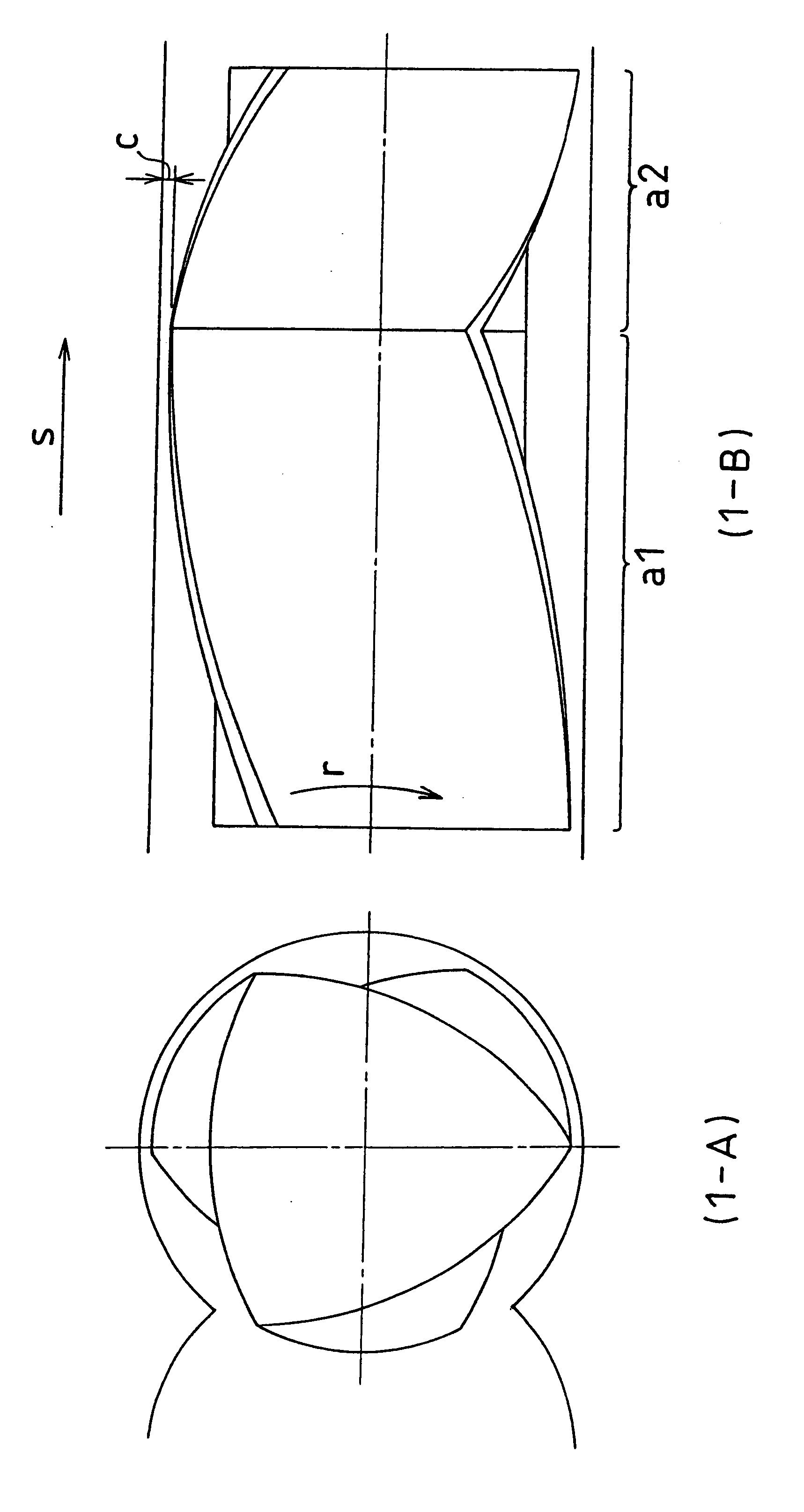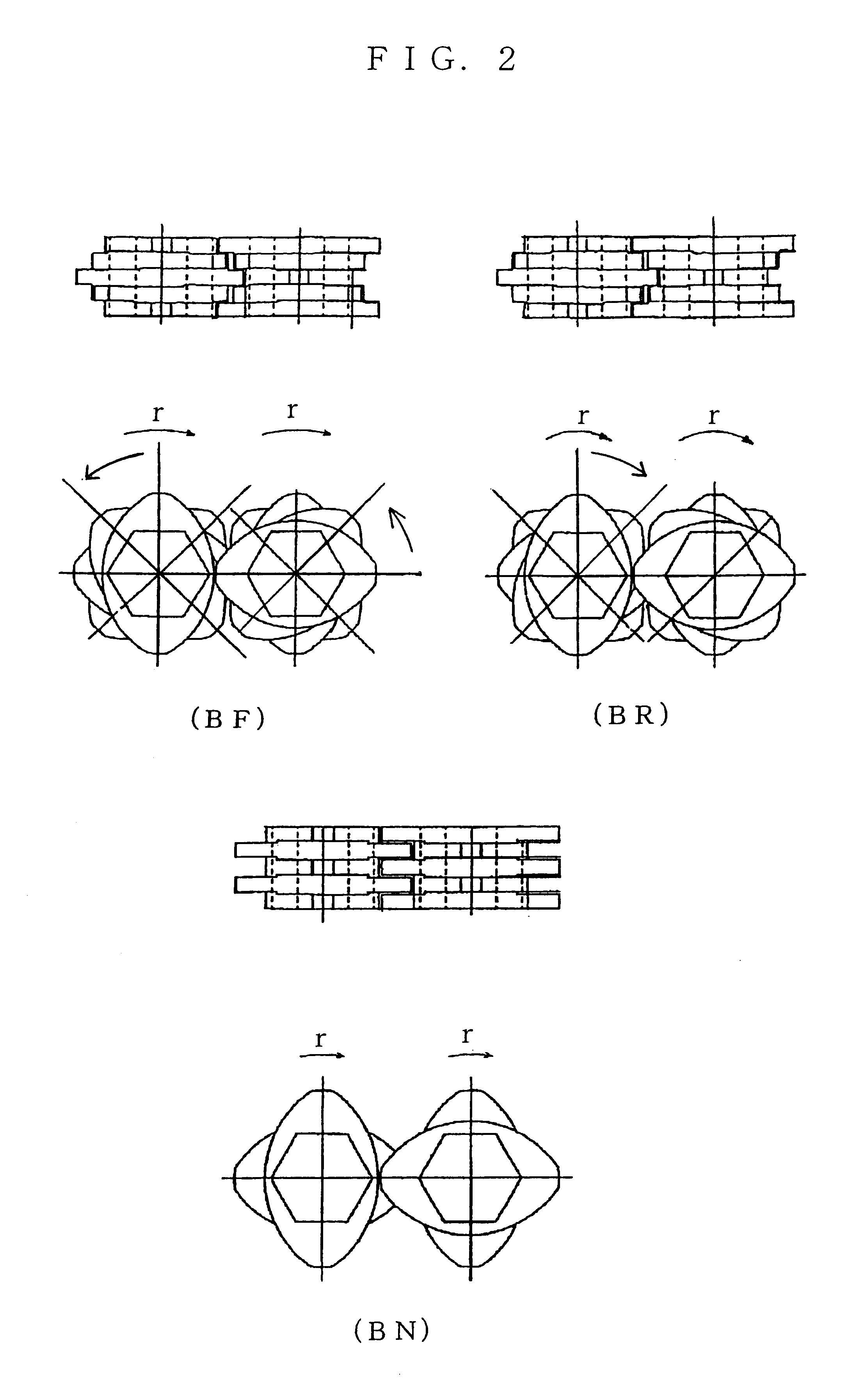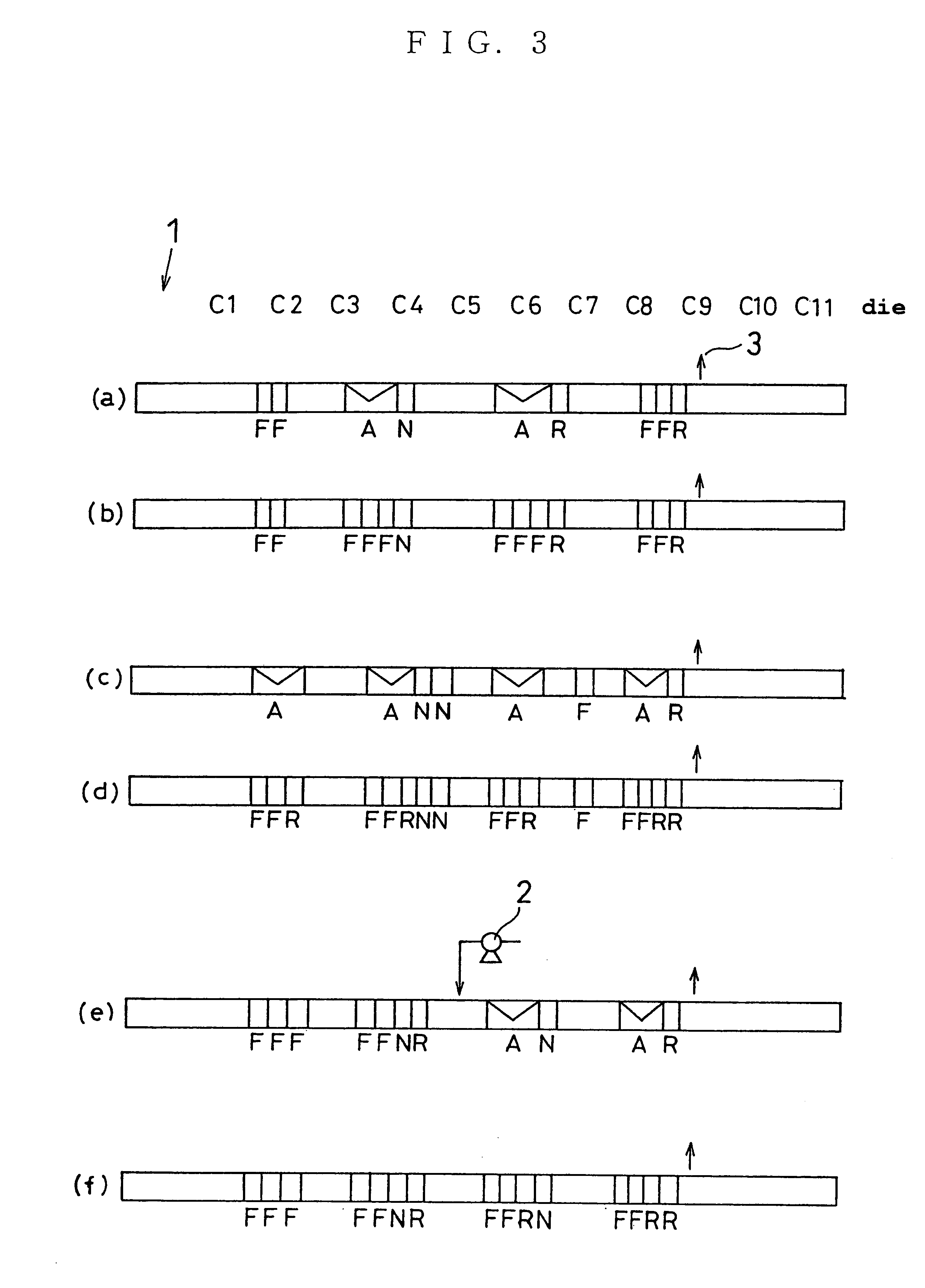Method for manufacturing olefinic thermoplastic elastomer composition
a technology of thermoplastic elastomers and thermoplastic elastomers, which is applied in the direction of chemical/physical/physical-chemical stationary reactors, chemical apparatus and processes, chemical/physical/physical-chemical processes, etc., can solve the problems of poor tensile strength, remarkably damaged product value, and not necessarily satisfactory, so as to improve tensile strength and molding appearance, improve product quality, and reduce the effect of gel-like minute mass
- Summary
- Abstract
- Description
- Claims
- Application Information
AI Technical Summary
Benefits of technology
Problems solved by technology
Method used
Image
Examples
example 1
75 parts by weight of pellets of ethylene-propylene-5-ethylidene-2-norbornene copolymer rubber (R-1; Mooney viscosity ML.sub.1+4 (100.degree. C.) 94, ethylene / propylene molar ratio 78 / 22, iodine value 13), 25 parts by weight of pellets of propylene homopolymer 1 (MFR (ASTM D1238-65T, 230.degree. C., load 2.16 kg) 11 g / 10 min., density 0.91 g / cm.sup.3), 0.2 part by weight of 2,5-dimethyl-2,5-di-(tert-butylperoxy)hexane and 0.3 part by weight of divinylbenzene were thoroughly stirred and blended in a Henschel mixer, charged into a hopper of a twin screw extruder fitted with the screw shown in FIG. 3(a), and subjected to dynamic crosslinking under the following conditions to manufacture pellets of a thermoplastic elastomer.
Extruder: complete engaged type twin screw extruder (same rotary direction)
Screw diameter: 46 mm
Thickness of kneading segment (total of thickness of a1 and that of a2): 108 mm
L / D: 44
Temperature setting: C1 / C2 / C3 / C4 / C5 / C6 / C7 / C8 / C9 / C10 / C11 / D=120 / 120 / 140 / 140 / 160 / 180 / 200...
example 2
Pellets 60 parts by weight of oil-extended ethylene-propylene-dicyclopentadiene copolymer rubber [R-2; Mooney viscosity ML.sub.1+4 (100.degree. C.) 70, ethylene / propylene molar ratio 79 / 21, iodine value 13, oil amount 40 parts by weight (paraffinic process oil made by Idemitsu Kosan Co., trade name: Diana Process PW-380)], pellets 25 parts by weight of propylene-ethylene block copolymer (MFR (ASTM D1238-65T, 230.degree. C., load 2.16 kg) 15 g / 10 min., density 0.91 g / cm.sup.3, n-decane extraction amount 8.2% by weight), pellets 15 parts by weight of ethylene-1-hexene random copolymer (MFR (ASTM D1238-65T, 190.degree. C.) 18 g / 10 min., density 0.92 g / cm.sup.3, ethylene content 97 mol %), 0.2 part by weight of 2,5-dimethyl-2,5-di-(tert-butylperoxy)hexane and 0.3 part by weight of divinylbenzene were fully stirred and blended in a Henschel mixer; charged into a hopper of a twin screw extruder equipped with the screw shown in FIG. 3(c), and subjected to dynamic crosslinking under the fol...
example 3
Pellets 70 parts by weight of an oil-extended product of ethylene-propylene-5-ethylidene-2-norbornene copolymer rubber [R-3; Mooney viscosity ML.sub.1+4 (100.degree. C.) 70, ethylene / propylene molar ratio 80 / 20, iodine value 11, oil amount 40 parts by weight (paraffinic process oil made by Idemitsu Kosan Co., trade name: Diana Process PW-380)], pellets 30 parts by weight of propylene homopolymer 2 (MFR (ASTM D1238-65T, 230.degree. C., load 2.16 kg) 2 g / 10 min., density 0.91 g / cm.sup.3) and 0.2 part by weight of N,N'-m-phenylenebismaleimide were fully stirred and blended in a Henschel mixer, charged into a hopper of a twin screw extruder equipped with the screw shown in FIG. 3(e) and fed at 120 kg / h to the first feeding port of the extruder. 2,5-Dimethyl-2,5-di-(tert-butylperoxy)hexane diluted to 30% by weight with a softening agent (paraffinic process oil made by Idemitsu Kosan Co., trade name: Diana Process PW-380) was fed to the second feeding port at 240 g / h, and the mixture was ...
PUM
| Property | Measurement | Unit |
|---|---|---|
| temperature | aaaaa | aaaaa |
| temperature | aaaaa | aaaaa |
| softening point | aaaaa | aaaaa |
Abstract
Description
Claims
Application Information
 Login to View More
Login to View More - R&D
- Intellectual Property
- Life Sciences
- Materials
- Tech Scout
- Unparalleled Data Quality
- Higher Quality Content
- 60% Fewer Hallucinations
Browse by: Latest US Patents, China's latest patents, Technical Efficacy Thesaurus, Application Domain, Technology Topic, Popular Technical Reports.
© 2025 PatSnap. All rights reserved.Legal|Privacy policy|Modern Slavery Act Transparency Statement|Sitemap|About US| Contact US: help@patsnap.com



